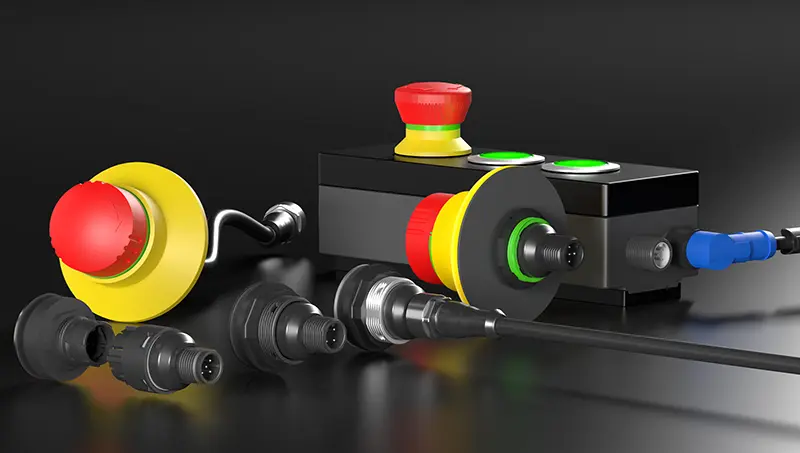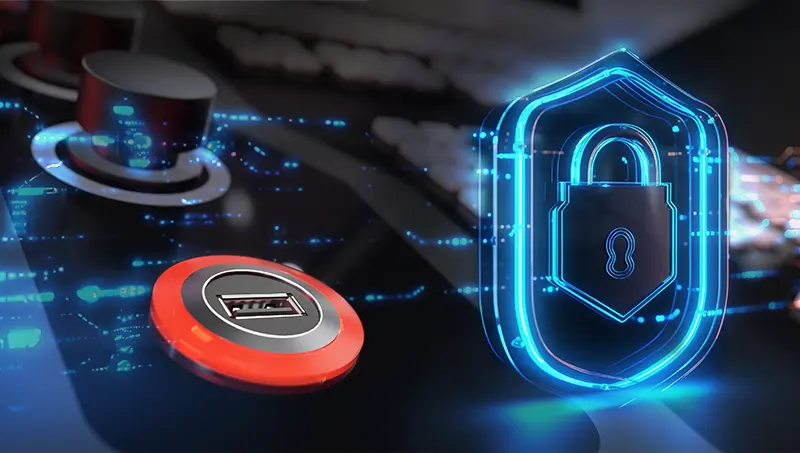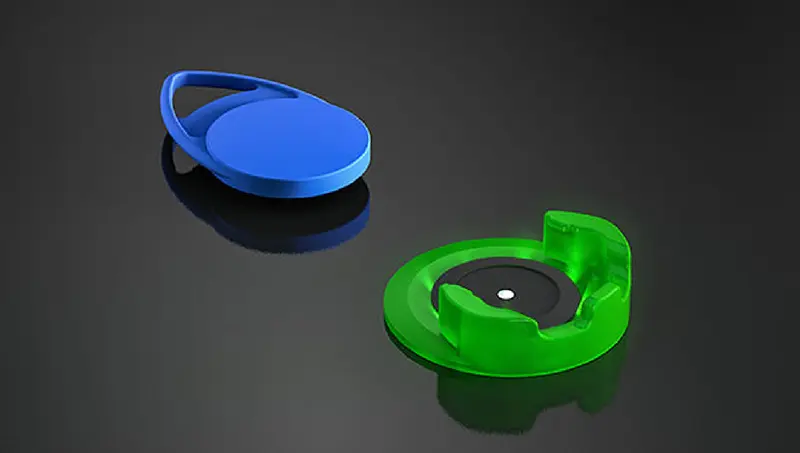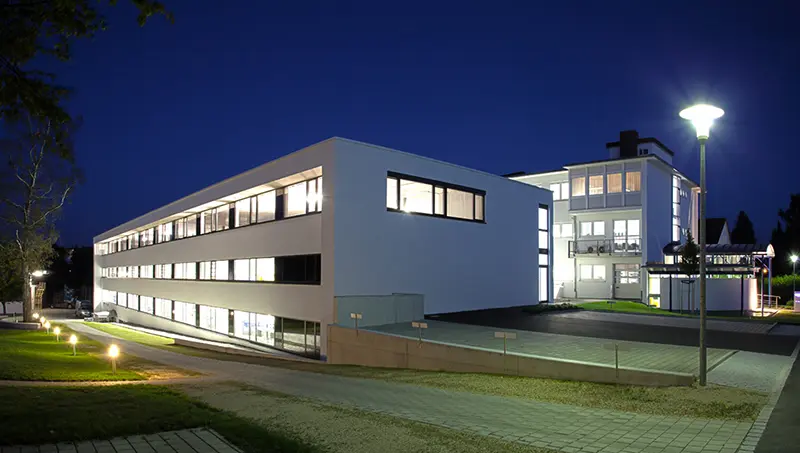FAQ
Pushbuttons and switches
What are pushbuttons and switches?
By activating a pushbutton or switch, its switching status changes and a function that is related to it will be activated on the machine or plant. Typical examples are emergency-stops, pushbuttons, selector and key switches, but also capacitive or contactless switching elements.
What is a signal device?
Signal devices indicate a change in status on a machine or plant via a visible or audible signal. Typical examples of signal devices are optical or acoustic signal generators like pilot lights, signal towers or sirens.
What is a normally closed (NC) contact?
A switching contact is called a normally closed contact when it opens an electrical circuit and thus interrupts it. In idle state, the circuit is closed and electricity flows to the consumer. If the switching contact is actuated via a pushbutton or switch, the circuit is being opened and the electricity flow to the consumer is disrupted.
What is a normally opened (NO) contact?
A switching contact is called a normally opened contact when it closes an electrical circuit. In idle state, the circuit is opened and the electricity flow to the consumer is disrupted. If the switching contact is actuated via a pushbutton or switch, the circuit is being closed and the consumer is supplied with electricity.
What is an inverter?
A switching contact is called an inverter when it changes the state of two circuits at the same time. In idle state, the first circuit is closed while the other one is opened. If the switching contact is actuated via a pushbutton or switch, the state of each circuit changes into that of the opposite: The first one is being opened and the other one is being closed simultaneously.
What is the difference between a pushbutton and a switch?
A pushbutton is not a switch: The difference between both lies in their state after being actuated. A pushbutton will return to its initial position after being actuated, while a switch will stay in its new position. Typical examples for a pushbutton are a doorbell or the button of a mouse. For a switch typical examples are a light switch or the switch of an oven.
Emergency-stop
What is an emergency-stop button?
An emergency-stop button is a switch that puts a machine or a plant in a safe state in the event of danger. The emergency-stop button is locked after being actuated and the corresponding part of the machine or plant is shut down. Only after releasing the emergency-stop button the system can be started again.
What is an emergency shut-off button?
An emergency shut-off button is a switch through which machines or plants are cut off from the power supply in the event of danger. In contrast to an emergency-stop button the machine or plant is not being put in a safe state first, so the machine or plant can still pose a danger.
Which standards to be observed regarding emergency-stop buttons?
The machinery directive (2006/42/EG) requires for all machines to be equipped with at least one emergency-stop button. To ensure that an emergency-stop button can fulfil the requirements for a safe operation, it should be in accordance with the standards EN 60947-5-1, EN 60947-5-5 and DIN EN ISO 13850 and be tested according to TÜV or VDE.
What is a start-stop button?
A start-stop button has a similar operating principle as an emergency-stop button. Here the button will be locked as well after being actuated and can only be released by twisting or pulling. However, a start-stop button must not be used in a safety-relevant environment and thus may not have red/yellow colours.
What is a mushroom head?
A mushroom head has a similar design to an emergency-stop or start-stop button. In contrast to those buttons however, the mushroom head does not latch and only triggers a brief impulse. Mushroom heads are meant to be actuated quickly and safely, but they must not have the signal colours of red/yellow.
Bus systems
What is a fieldbus system?
In this system, sensors and actuators are connected with each other via a bus on a field level. The sensors and actuators are placed on power units, switches and control elements (transmitter) and exchange data with the control devices (receiver) via the bus system. The control devices then activate the corresponding function.
What is Industrial Ethernet?
Industrial Ethernet is the expansion of Ethernet by the ability of real-time functionality as it is already the case for fieldbus systems. As Ethernet components don´t need a fix address, an Industrial Ethernet can be expanded easier and faster.
What is the difference between fieldbus and Industrial Ethernet?
The most significant difference lies in the level on the automation pyramid into which those systems fall. Fieldbus systems are part of the lower levels "field and sensor/actuator", whereas Industrial Ethernet is present on all of the levels. The benefit is that the communication through all levels is much easier.
Which systems are preferred in the industry?
The most used fieldbus systems are Profibus, Modbus-RTU, CC-Link and CANopen. For the Industrial Ethernet, they are EtherNET/IP, Profinet, EtherCAT and Modbus-TCP.
Panel mount jacks
What are data jacks or panel mount jacks?
Panel mount jacks are simple interfaces that connect physically separated systems to enable the exchange of data. A typical application in the machine building industry is the following: An USB input on a machine is connected to the outside via the panel mount jack and thus can be accessed.
What kind of panel mount jacks are available?
First and foremost, panel mount jacks differ in the kind of their interface, such as USB, RJ45 or HDMI. But there a different types of connection. For example, a jack can be required in the front and on the rear, or a male connector has to be on the rear. Also the length of the cable behind the panel may vary.
What is a HDMI connection?
HDMI stands for High Definition Multimedia Interface and is an interface for digital transmission of video and audio in the multimedia sector. HDMI offers a high transmission speed and bandwidth, so that media of high quality can be used smoothly and without interference.
What is RJ45?
RJ45 is a plug-in connection that is mainly used in computer networks. Everyone who owns a PC or notebook can find a RJ45 jack on those devices to connect with a network or the internet. The corresponding cables have a RJ45 plug.
What are the benefits of a data jack / panel mount jack?
The hardware of a machine is built-in securely in order to protect it. By using a panel mount jack, it is possible to access the hardware from the outside. Furthermore, the installation is easy and affordable.
RFID
What is RFID?
RFID stands for Radio Frequency Identification and describes the contactless identification of objects via radio waves. An RFID system always consists of a reading unit and one or more transponders (so-called tag).
How does the setup of an RFID system look like?
The transponder consists of a coil (antenna) and a microchip that carries the data. The reading device generates an electromagnetic field via radio waves. If there is a transponder present within this field, its coil induces electricity and creates a signal, which the reading device can receive and analyse.
How are RFID systems used?
A typical field of application for RFID is the identification of people, e.g. access controls or time recordings. But also identification of objects, e.g. in relation to authenticity checks, maintenance or production, is often realised by using RFID.
Which RFID technologies are there?
RFID is available for various frequencies. To put it simple, the longer the required range, the more energy is needed. There is a distinction between three frequency ranges: LF (low) covers areas of < 135 KHz and < 0.1 m, HF (high) covers areas of 13.56 MHz and < 0.5 m, UHF (ultra high) covers areas of 865 – 928 MHz and < 10 m.
Terminal blocks
How do terminal blocks work?
Terminal blocks are used to connect cables. Their flat housing construction allows to connect them in series. The result is an uncluttered, space-saving and easy to manage arrangement of cable connections.
What kind of terminal blocks are available?
There is a great variety of terminal blocks. Apart from standard terminal blocks, the feed-through terminals, disconnecting terminal blocks, fuse terminal blocks, earth connection terminal blocks, combined terminal blocks, initiator terminal blocks and the pickaback terminal blockss are among the most important terminal blocks.
Enclosures
What is an industrial enclosure?
Industrial enclosures are meant to protect their contents from external influences. An industrial enclosure is used in the industrial sector where the enclosure has to withstand special conditions. This can be for example extreme temperatures, special weather conditions, or strong physical and chemical exposures.
What kind of enclosures are available?
Enclosures can be differentiated by their type of material, their size and the application. Most of the enclosures in the industrial sector are made of plastic or metal (stainless steel, aluminum). Their size ranges from enclosures for small controls to consoles or switching cabinets.
Where are industrial enclosures being used?
Industrial enclosures are used in multiple ambient conditions. Those are for example dust-free cleanrooms or production halls where goods may be manufactured in especially rough and harsh environments. Here, industrial enclosures fufil the roles of simple controls, small junction boxes or big switching cabinets.
Devices for command and control (operating panel)
What is meant with the term operating panel, HMI?
An operating panel is used to control a machine and is equipped with diverse function displays and pushbuttons and switches. The Human Machine Interface (HMI) takes a special position in this system to make the connection between man and machine via a software as easy, comfortable and safe as possible.
How is an operating panel designed?
In general, an operating panel consists of one or more displays to show information and one or more pushbuttons and switches to control the machine. However, newer operating panels nowadays only have a multi touch display which is used for control and a single emergency-stop.





